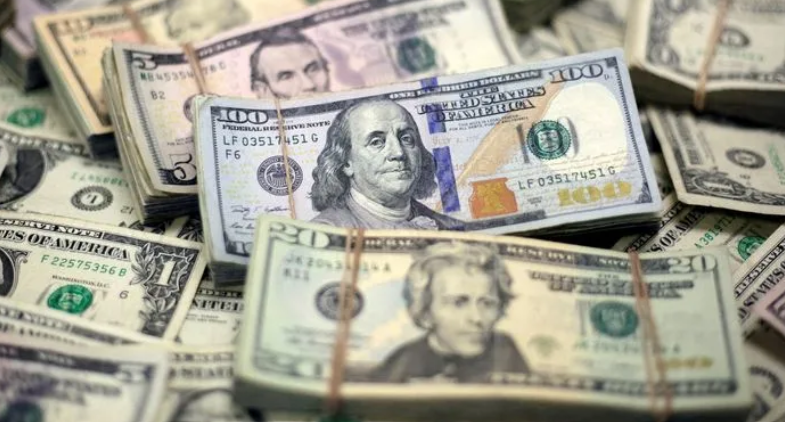Dollar weakens, yen hits 2024 high on Fed bets of significant rate decrease
**Dollar Weakens, Yen Surges to 2024 High on Federal Reserve Rate Cut Speculations**
The U.S. dollar tumbled, while the Japanese yen climbed to its highest level of 2024, as expectations of an aggressive interest rate cut by the Federal Reserve intensified. The market’s focus has shifted towards potential dovish monetary policy signals from the Fed, prompting significant currency market movements. Traders and investors are increasingly pricing in a scenario where the Federal Reserve may ease its current stance on rates amid signs of economic slowdown and cooling inflation.
Key Drivers Behind the Dollar’s Weakness
The U.S. dollar, which has shown strength throughout 2023 as a result of the Fed’s aggressive rate hikes, began to lose its footing at the start of 2024. Several factors are contributing to the weakening greenback, including softening inflation, mixed economic data, and a more dovish tone from Federal Reserve officials.
1. **Inflation Moderation**: The latest inflation data out of the U.S. has shown a marked deceleration, with consumer price index (CPI) figures falling below market expectations. Core inflation, which strips out volatile food and energy prices, has also been on a downward trend, suggesting that the Fed’s previous rate hikes are successfully taming price pressures. Lower inflation reduces the urgency for maintaining high interest rates, which has traditionally been a driver for a stronger dollar.
2. **Economic Slowdown**: Beyond inflation, signs of economic slowdown are emerging in the U.S. manufacturing and housing sectors. PMI (Purchasing Managers’ Index) reports have indicated contraction in manufacturing activity, while the housing market has cooled, with mortgage rates remaining elevated. These developments raise concerns about future economic growth, leading to speculation that the Fed may need to adopt a more accommodative monetary policy sooner than previously anticipated.
3. **Fed’s Dovish Tone**: A growing number of Federal Reserve officials have hinted at the possibility of a rate cut. In recent speeches, Fed policymakers have acknowledged the risk of overtightening monetary policy, stressing the need to strike a balance between controlling inflation and supporting growth. The dovish rhetoric has bolstered market expectations for a potential rate reduction as early as mid-2024.
Yen Surges Amid Safe-Haven Appeal and Domestic Policy Expectations
The Japanese yen, long considered a safe-haven currency, has surged in response to the dollar’s decline, reaching its highest level in 2024. The yen’s strength can be attributed to a combination of domestic factors and global market dynamics, particularly the shifting expectations surrounding U.S. monetary policy.
1. **Safe-Haven Status**: As uncertainty over the global economic outlook increases, the yen has benefited from its status as a safe-haven currency. Investors tend to flock to the yen during times of market turbulence or when risk appetite diminishes. With the Fed signaling a more cautious approach and concerns about the U.S. economy rising, investors are seeking refuge in the yen.
2. **Bank of Japan’s Stance**: The Bank of Japan (BoJ) has maintained an ultra-loose monetary policy for years, but there are growing speculations that it may start to tighten in response to rising domestic inflationary pressures. Japan has seen an uptick in inflation, with wage growth and consumer prices trending upward. While the BoJ has been slow to adjust its stance, market participants are beginning to price in a possible shift, which has contributed to the yen’s appreciation.
3. **Interest Rate Differentials**: The potential narrowing of the interest rate gap between the U.S. and Japan has also played a significant role in the yen’s strength. Throughout 2023, the wide gap in interest rates, with U.S. rates being much higher than Japan’s, led to a weaker yen. However, as the Fed considers rate cuts and the BoJ faces pressure to adjust its policy, this gap could close, making the yen more attractive relative to the dollar.
Implications for Global Markets
The weakening of the dollar and the rise of the yen have broad implications for global markets, particularly for trade, investments, and central bank policies.
1. **Trade Dynamics**: A weaker dollar could boost U.S. exports by making American goods more affordable for foreign buyers. However, it could also increase the cost of imports, potentially complicating the Fed’s efforts to fully control inflation. Conversely, a stronger yen could hurt Japanese exporters, as it makes their products more expensive abroad, potentially dampening Japan’s post-pandemic economic recovery.
2. **Emerging Market Currencies**: The weakening dollar could offer some relief to emerging market economies, which have been strained by dollar-denominated debt and rising borrowing costs. A more accommodative Fed stance could ease financial conditions globally, allowing emerging market currencies to stabilize after a volatile 2023.
3. **Central Bank Strategies**: Central banks around the world are closely monitoring the Fed’s next moves. If the Fed shifts to a more dovish stance, other central banks might feel compelled to adjust their policies accordingly. For example, the European Central Bank (ECB) and Bank of England (BoE) could reevaluate their tightening cycles in response to changing global financial conditions.
Outlook for the Dollar and Yen
Looking ahead, the trajectory of the U.S. dollar and Japanese yen will largely depend on economic data and central bank actions. If the Fed confirms market expectations with a rate cut in the coming months, the dollar could continue to weaken, while the yen may see further gains. However, much hinges on the broader global economic landscape, including how inflation and growth evolve in both the U.S. and Japan.
For now, currency markets remain highly sensitive to the evolving policy outlook, with traders watching every signal from central bank officials and key economic indicators. The interplay between a potential Fed rate cut and the BoJ’s policy stance will be pivotal in determining the future direction of the dollar-yen pair.

